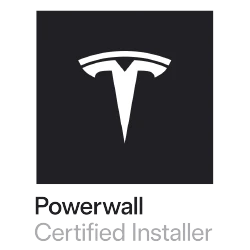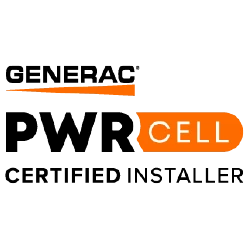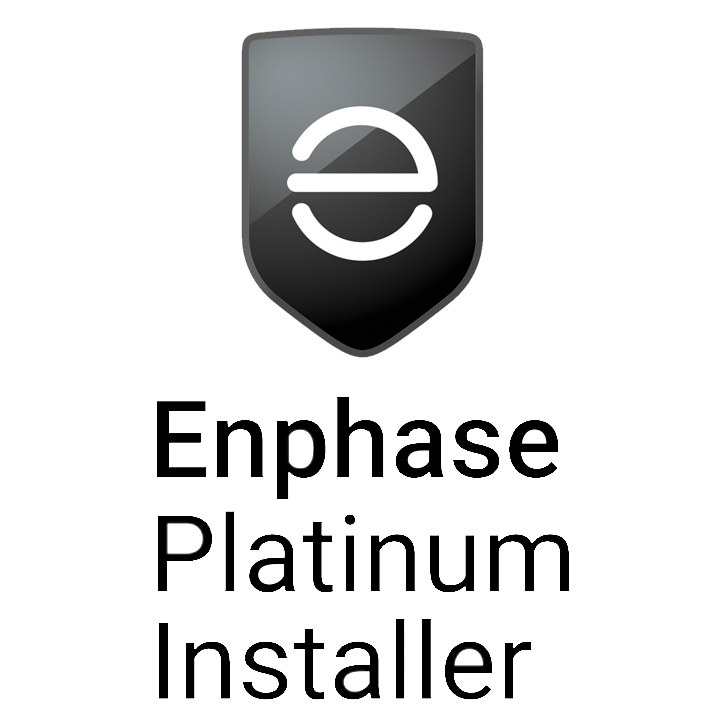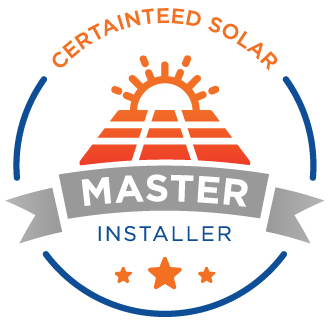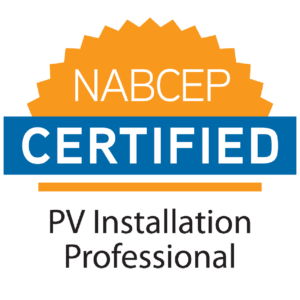Frequently Asked Questions
How does rooftop solar work?
A Rooftop Solar Energy system is made up of several important components to help provide clean solar electricity for our homes and businesses. These components are 1) Solar Modules, 2) Inverters, 3) Safety equipment like shut-off devices and module-level power electronics, 4) communications equipment to help you monitor your system, and 5) the racking structure that holds solar panels to the roof. Each piece plays a critical role in ensuring a safe and reliable source of clean energy from your solar energy system.
Solar Panels produce electrons when hit by sunlight. Those electrons gather together and travel along tiny conductors inside the solar panel to create electrical power. The electricity leaving a solar panel is Direct Current (DC). Modern homes and buildings use Alternating Current (AC) to run our appliances so electricity from solar panels must be converted before entering your home’s electrical systems. Solar Inverters convert the DC electricity from the solar modules to AC electricity for use in our homes and buildings. Inverters can either be located underneath your solar panels on the roof (called MicroInverters) or hung on a wall inside or outside your home.
All of the electricity converted by your inverter will enter your home through the interconnection point with your home’s existing electrical infrastructure.
This electricity will first and foremost go to meeting any electrical demand your home has in the moment that the electricity is generated. If your home needs more electricity than your solar panels are producing, then your home will draw power from both the solar energy system and your existing utility system. If your home is producing more solar power then your home needs than the excess solar power can either be saved in a battery energy storage system or can be exported back to the utility grid. Your electric meter will keep track of the power you have consumed and the power you have exported. This is called bi-directional metering.
Some utilities offer a program called Net-Metering which credits exported solar energy at a rate equal to the amount they charge when you purchase electricity. This credit has the effect of offsetting future energy consumption from the grid – like at night when the sun isn’t shining. Every utility is different and it’s important to work with a solar installer who knows your utility’s energy policy. Be sure to ask your solar consultant questions about your utility’s policy.
Does my system store energy? How to be ready for a grid outage
Unless you’ve purchased an energy storage/home battery installation, your solar won’t be storing power.
What happens to my solar power at night?
Solar power is magnificent, but still only produces power during the day, when the sun is in the sky in your part of the world.
Why is it important to avoid shading?
Shade is the enemy of solar. Any shadows cast by other buildings, trees, beanstalks, mountains, or monsters will impact the power – and the value – you derive from your solar system. Careful surveying and assessment of your solar location will help make sure that your rooftop or field is an appropriate place for a solar system that will provide power to your satisfaction.
Other Frequently Asked Questions about Solar Energy Systems:
How exactly does going solar and a solar system itself work?
How many solar panels do I need for my home?
Roof-size/available space: When we look at the size of your roof and the space available, we gather data that tell us the maximum number of solar panels your home or site can hold and we even consider shading. We use a software “Suneye” which takes a 360 picture of your roof and we use this photo to determine if your home is a good candidate for solar.
Energy Usage: When we determine energy usage we look at your past electrical bills from over the course of a year to make sure your system isn’t too big or too small.
Your Budget: We take your budget seriously and most importantly, we want you to be satisfied with our services. We take your feedback on how much you want to spend so that we can size your system appropriately.

